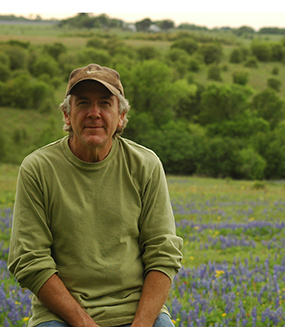Once this unique West Texas landmark, Bob’s Oil Well, was one of the states busiest road-side businesses. Located at the crossroads of US 70 and TX 70 in Matador, Texas.
Luther “Bob” Robertson, a World War I veteran, moved to Matador in the 1920s and worked as a filling station attendant. In 1932 he decided to open his own service station. To draw attention to the station he built a wooden oil derrick over the station. He replaced the wooden structure with an 84 foot tall steel derrick and included lights, that could be seen for miles. Bob paid long distant truck drivers to place signs at strategic locations across the nation stating how many miles to Bob’s Oil Well in Matador. Soon travelers from near and far were visiting.
Robertson enlarged his business to include a grocery store, cafe (next door), garage, and even a small zoo where visitors could see caged rattlesnakes, monkeys, lions, coyotes and a white buffalo.
Bob died in 1947. His wife, Olga, kept Bob’s open until it closed in 1950’s. In 2004 it was placed on the Texas endangered building list and a historical marker was placed at the site.
Bob Robertson is one of my new heroes……war veteran, worker, business owner, and a marketing mastermind.
“There is no one road to success – you must find your own route” Robert Kryonsaki
In the center of Kent County Texas is Clairemont – the formal county seat and now a ghost town. Clairemont was established in 1892, located on land owned by R.L. Rhomberg, a local rancher. The new town was named after his niece, Claire Becker. The town soon had several stores, a bank, a newspaper, and a hotel. In December of 1892 post office was granted. In 1895 a sandstone jail and matching courthouse were constructed.
Cotton, oil, and cattle ranching dominated the economy. By the 1930’s the population had grown to over 200 citizens. The population started to decline in the 1950s due to inadequate water source, declining cotton prices, and oil camps relocating to richer fields. In the early 1950s the courthouse burned. The post office was closed in 1970. The population had dwindled to about 15 by the 2000s.
One of the most interesting building still standing in Clairemont is the Kent County Jail. The iron cells are 12 x 12 feet and about 7 feet high, built inside of the red sandstone building. This jail was know across West Texas as virtually escape-proof.
It is told that a noted outlaw was on his deathbed at the jail after being shot by a Texas Ranger’s well placed .45 slug.
“Tell me who you rode with and where I can find ’em,” the lawman ordered the dying badman
“Can you keep a secret?” the outlaw whispered, barely able to speak.
“You bet your boots I can” responded the Ranger
“So can I” , the outlaw said as he died with his boots on.
When visiting you better back a sandwich or two – there is no place to grab lunch………but this is definitely a BIG TEXAS STEP into history!
CLAIREMONT, TEXAS – GONE BUT NOT FORGOTTEN
As you travel the backroads of Texas you will soon realize that the historical soundtrack of these roads is the Fiddle. Over hundreds of years a distinct style of has evolved now known as Texas-style fiddling.
The fiddle was brought to America by early colonists. The earliest recorded fiddle player in the US was John Utie who settled in Virgina in 1620. Utie was a professional fiddler from England. As these colonists traveled and settled in other locations they would pack only their necessary possessions – which if they played the fiddle it was the first thing packed. In the early 19th century as many immigrant fiddle players moved to Texas the roots to what would become know as Texas-style began. This style of fiddle playing was a blend of Czech and German polka, African-American blues, Mexican music, and other style from European countries including France, Scotland, and Ireland. All of the different styles and cultures were present in Texas because of states vast size and the large number of people moving to the territory.
As communities grew, in the mid 1800s a very distinct form of fiddle music began to evolve. Whenever there were social gathering and events the entertainment would be string bands usually fronted by the fiddle. The early string bands usually consisted of a fiddle or two, guitar, banjo, and sometimes an accordion. The musicians would set up anywhere there was room and play while others would listen.
The first recording of Texas style of fiddling was in 1922, a solo performance of “Sally Gooden” by Eck Robertson and “Arkansaw Traveler” played by Robertson and Henry Gilliland. These two tunes are still played at current day fiddling contest. Most at the time called it “hillbilly music”. In the 1930’s the fiddle bands began to transition to western swing bands, vocals were now common and the music’s purpose was more for dancing and entertainment. Many of these musicians were featured on daily radio programs all across Texas.
Fiddling contest that date back to the 19th century have helped to sustain interest in Texas style fiddling. Beginning in the 1950’s records and accounts of the contest were documented. The greatest influence is that fiddling is generational. Fiddle players pass this style of music down to their children and grandchildren, lets hope this circle does not get broken! The fiddle contest is about the only avenue for these musicians to share their skills. There is no interest by radio or TV networks – unless PBS happens to do a feature.
There are Texas fiddlers that make many sacrifices to preserve this distinctly Texas style of music. These talented men and women do this out of passion and love. Many will earn money teaching fiddling or by working as pick up musicians for western swing or country bands (usually in the background).
If you are unfamiliar with this music I would suggest attending a Fiddling Contest These events are held throughout Texas. Believe me, as a “rock and roll” fan – you will be amazed by these extremely talented musicians that are passionate and play because they love the music. There are not a lot of fiddler groupies and drugs after these performances – just great musicians, cold bear, soda, and possibly some BBQ.
For more information visit The Texas Old Time Fiddlers Association at http://www.totfa.org Texas Folk Life at http://www.texasfolklife.org
“It’s not a Violin, Dammit!”…………every fiddler that ever lived!
The 1960’s were the golden age of the TV Western. Many of the shows were centered around large cattle ranches. Like other boys, the cowboys on TV were my heroes. I would often dream of living on the Barkley Ranch, from the Big Valley or the Ponderosa Ranch from Bonanza – alway wanted to be the youngest Cartwright son.
Ranching has played a major part of the history of Texas. As early the 1500s wild cattle from ranchos in central Mexico began wandering into territory which is now Texas. Cattle ranching began in Southern Texas in 1749, when Jose de Escandon, the governor of Nuevo Leon, brought 3,000 settlers and 146 soldiers to settle near the Rio Grande river (at that time known as the Rio Bravo). These were the first Spanish settlements in the area. Many Ranchos were established alone the river. These earlier settlers faced many hardships including the constant attack by hostile indians who also inhabited the area. The settlers had come from ranching communities in Mexico and were well versed in on raising cattle in similar arid areas. They also brought many traditions from their Spanish heritage that influenced Texas Ranch life. These settlements were the birthplace of the American cattle industry. The ranches grew into settlements, some becoming towns and cities.
The first land grants were long strips of land that began at the river and stretched inland on both sides of the Rio Grande – these were called porciones. This assured water supply for each of the landowners. Ranchers that moved further north into more arid brushy land received very large parcels of land to support there cattle herds. Ranchers organized their landholdings called haciendas, large estates. They engaged in many money-making businesses including lumber, raising sheep, farming, and mining. These hacienda became enclosed communities – large houses were built for the hacendado (ranch owner) and his family. Most were surrounded by stone wall for protection from the frequent attacks from Comanche and Apache tribes. The vaqueros (cowboys) and hacienda laborers and their families lived in one room huts called jacales
By the mid-1800’s , cattle ranching had become big business in Texas! Wealthy cattle barons like Charles Goodnight and Richard King were known coast to coast. The “hired hands”, unlike the tall, rugged, and swaggering cowboys that we saw on the big screen, were young men – white, African American, Hispanic, and sometimes female. They usually did not own the horse that they rode, but most did own a good saddle which they spent countless hours, both day and night, sitting on. If they were lucky to get steady work on a ranch they could make what would be equivalent today to about $300.00 a year. The ranch cowboy spent their day checking and mending fences, branding cattle, and moving cattle to grazing areas and water. At night they patrolled the ranch for cattle rustlers and wolves.
Many of these early ranches are still exist today including The King Ranch (established in 1853); The Waggoner Ranch (established in 1871); The O’Connor Ranch (established in 1834); The Jones Family Ranches (established in 1897); and many others.
Ranchers today know more about conservation then ranchers in the past. Drought in the 1950’s forced severe lessons in range management and an awareness of proper stocking rates, rotation grazing, reseeding, and new methods of brush control. Ranches are not only today still raising livestock many are set aside for recreational and conservation.
If you travel the backroads of Texas you are aware of the many ranches scattered throughout the state. As you past miles of fence lines and the ranch entrance – most identifying the ranch that lies beyond the gate.
Texans take pride in our history – The Cattle Ranch has played a large role in that history. As in the past, todays Texas Ranchers are hard at work caring and protecting the resources on their land. I have had the opportunity to tour a number of these ranches – it is amazing what is beyond the gates.
As a child I dreamed of eating grub at the chuck wagon after a long day of riding the range with Ben, Adam, Hoss, and Little Joe Cartwright. Actually the best part of the dream was living at the main house at the Ponderosa Ranch and eating some Hop Sing’s cooking. Although the Ponderosa was in Nevada, that dream for some is alive in Texas – Texas Ranches are a great investment.
Below are some additional resources:
www.ranchconnection.com – Cynthia Inman owner of Ranch Connection has been putting sellers and buyer together for over 30 years. Large or small, she is an expert in all aspects of Ranch transactions.
www.texaslandtrustcouncil.org – Texas Land Trust Council
www.texasagricuture.gov – Texas Department of Agricuture
www.nature.org – The Nature Conservancy
“Texas is the finest portion of the globe that has ever blessed by vision”. Sam Houston
The Guadalupe Mountains National Park, located in west Texas, is a center of geological wonderment. This area preserves some of the exposed remains of the Capitan Reef, one of the worlds finest examples of ancient barrier reefs. Seawater and decade marine organisms deposited lime along the shelf of the Delaware Basin of the Permian Sea, forming a reef hundreds of feet thick. Erosion wore away the soft rock, which exposed the limestone of the Capitan Reef – this process continues today. The run off deposited salt on the flats which today are west of the park.
There is evidence left behind, pictographs and cooking pits that date back 12,000 years. Some of these sites are accessible to hikers. This area was the scene of a lot of blood shead between the Mescalero Apaches and Comanches. The Comanches had driven the Mescaleros to the area where they learned to survive on native plants and animals. The tribe roamed the area depending on the season and were eventially driven out of the Guadalupes by U.S. soldiers after a number of brutal battles. This area today still is an important cultural and spiritual sanctuary for decedents of the Mescalero. Members of the tribe return to the area to harvest agave which is used for ceremonial purposes.
Felix McKitrick was one of the first settlers in the Guadalupe Mountains, he worked cattle here during the 1870’s. McKittrick Canyon is named after him. Frijole Ranch was the first ranch house built in 1876 by the Rader brothers. The ranch house was the only major building in the region and served as a community center and regional post office from 1916 to 1942 – the ranch house has been restored and is a museum today. In 1908, Henry Belcher constructed a house for he, his wife and daughter. They lived there on the ranch for over 10 years at times supporting over 3,000 heads of longhorns. The wildlife in the area at that time included – bear, wolf, mountain lions, bighorn sheep and elk. Even some jaguar and grizzly would occasionally find refuge in the canyons. In the spring thousands of ducks, geese, cranes, and hawks would migrate along with many species of song birds. In a short period of the time the area was overgrazed and the animal population dwindled because of hunting, trapping , disease and the change of regional vegetation from grasses to shrubs.
In 1917, James Williams, from Louisiana, acquired the house and ranch property. He ran several hundred heads of longhorn for several years then switched to sheep and goats. The ranch was purchased by Judge J. C. Hunter in 1942 to be added to extensive holding he already had in the Guadalupe Mountains. After his death Hunter’s son sold the ranch to National Park Service in 1966. On October 15, 1966 President Lyndon Johnson signed the act establishing the park. The park opened in 1972.
The Guadalupe National Park contains Guadalupe Peak, which is the highest point in Texas at 8,749 feet in elevation. It also contains El Capitan which was a landmark by people traveling across the country to California. Later this same route was used by the Butterfield Overland Mail stagecoach – you can visit the ruins of the old stagecoach stain near the Pine Springs Center. The park covers 86,367 acres. There are numerous trails (over 80 miles) for both hiking and horseback riding. There are sites available for overnight camping.
The Guadalupe Mountain National Park is one of the least know parks in the National Park system – which only proves that there are a lot of folks out there missing a very special place! I asked a young girl who was hiking with her family what she enjoyed doing – she put her straight out, like wings, tuned in a circle and said “THIS IS IT!” She nailed it – if you are looking for an adventure in a beautiful place with tons of history – THIS IS IT!
“The mountains are calling and I must go” John Muir
|





.jpg)
.jpg)
.png)
.png)
.jpeg)
.jpg)
.jpg)
.jpg)
.jpg)
.jpg)
.jpg)
.jpg)
.jpg)
.jpg)
.jpg)
.jpg)
.jpg)
.jpg)
.jpg)




.jpg)




.jpg)

















.jpg)








































































